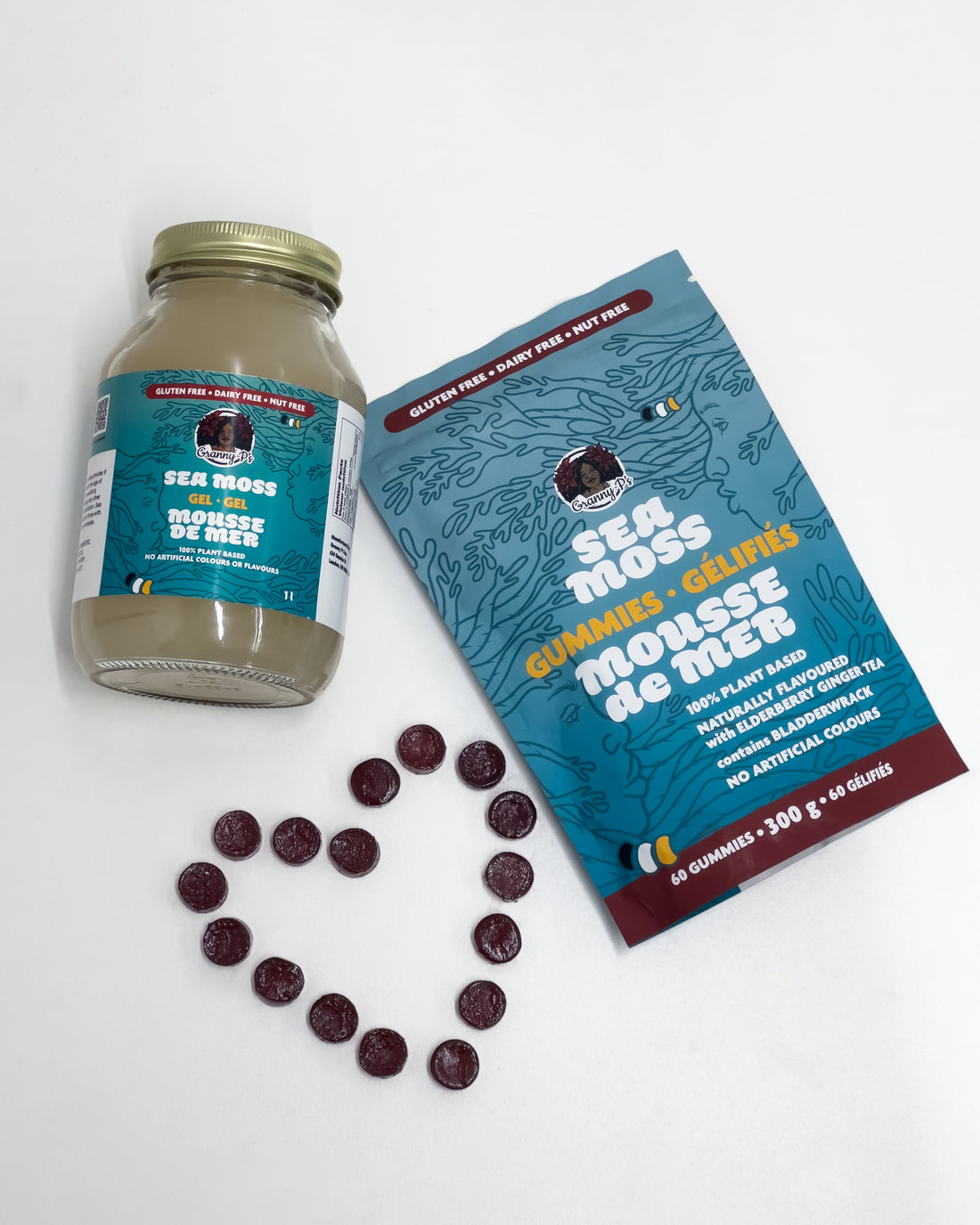Most people have eaten sea moss without even realizing it. Surprised? It’s true. The secret lies in carrageenan—a natural substance extracted from red seaweed (yes, sea moss!) that’s been quietly making its way into your favorite foods for years. From creamy ice creams to plant-based milks, carrageenan is a common thickener and stabilizer, helping to create the smooth textures we all love.
But somewhere along the way, carrageenan became controversial. Rumors spread. Misinformation took root. And suddenly, this natural sea moss extract was labeled as “harmful” or “unsafe.” So, where did all this confusion come from? And more importantly—what’s the truth?
Carrageenan Is Everywhere—And Has Been for Decades
If you’ve ever sipped on a cold glass of almond milk or savored a scoop of ice cream, you’ve likely consumed carrageenan. It’s a staple ingredient in many household products:
• Dairy products like chocolate milk, cream, and cottage cheese.
• Plant-based alternatives like almond, soy, and coconut milk.
• Processed meats, where it acts as a binder.
• Even toothpaste and air fresheners contain it for texture and stability.
Its purpose? To keep liquids smooth, creamy, and well-blended—without using animal-based gelatin. Food companies rely on carrageenan because it works, and because it’s derived from a natural, renewable source: sea moss (McKim, 2014).
So, Why All the Negative Buzz?
The controversy around carrageenan didn’t happen overnight. It started with confusion—specifically, the failure to distinguish between food-grade carrageenan (what’s used in your food) and degraded carrageenan (a chemically altered form not approved for consumption).
Let’s clear that up:
• Food-grade carrageenan is deemed safe by both the FDA and the World Health Organization (WHO) for human consumption (Tobacman, 2001).
• Degraded carrageenan (poligeenan)—a completely different substance—is not used in food due to concerns about inflammation and digestive issues (Weiner, 2014).
Despite years of research, regulatory bodies like the FDA and WHO have repeatedly confirmed that food-grade carrageenan does not cause cancer or other severe health risks (Cohen & Ito, 2002). So, why does the myth persist?
The Irish Sea Moss Misconception
One major factor is the assumption that all sea moss—and, by extension, all carrageenan—comes from the same place: Ireland. Historically, Chondrus crispus, also called Irish moss, was harvested along the rocky Atlantic coasts of Ireland and North America. Over time, concerns grew that these waters, particularly in industrialized areas, could contain pollutants like lead and mercury (Freeman et al., 2014).
While contamination is a valid concern in some regions, not all sea moss comes from Ireland—and it certainly doesn’t all carry the same risks.
At Granny P’s Sea Moss, we take sourcing seriously. Our sea moss is wild-crafted and ethically harvested from the clean, unpolluted waters of St. Lucia—a region known for its rich marine biodiversity and pristine ocean environment. We prioritize quality at every step, ensuring our customers receive the purest sea moss available.
Why Carrageenan Is Making a Comeback
Interestingly, after years of negative press, carrageenan is returning to the spotlight—but this time, for good reasons. As more people embrace plant-based diets and natural living, food manufacturers are once again turning to carrageenan for its unique properties. Unlike synthetic additives, carrageenan is derived from nature and is both sustainable and effective (McKim, 2014).
Beyond food, carrageenan also plays a crucial role in the pharmaceutical industry. It’s used in products you may rely on every day, including:
• Cough syrups—to provide a smooth texture.
• Throat lozenges—as a soothing agent.
• Dietary supplements—to stabilize and thicken formulations (Weiner, 2014).
Even with all the regulatory hoops and public scrutiny, carrageenan continues to be trusted in both food and medicine. That says something.
Should We Rely on the FDA for the Full Picture?
It’s easy to believe that if something isn’t FDA-approved, it’s unsafe—but the truth is more complex. The FDA plays a role in regulating food safety, but let’s not forget: It’s still a system that profits from our lack of knowledge.
Natural remedies and traditional ingredients—like sea moss—rarely get the same funding for research or fast-track approvals as pharmaceuticals. That doesn’t mean they’re unsafe—it just means the system isn’t built to prioritize them.
At Granny P’s, we believe in empowering our community with knowledge and quality. We know sea moss is more than just a trend—it’s a powerhouse of nutrition with centuries of proven benefits.
The Bottom Line
Carrageenan has been misunderstood for far too long. It’s not some mysterious, dangerous chemical—it’s simply sea moss, a natural gift from the ocean that’s been keeping our food smooth and our bodies nourished for generations.
When sourced responsibly—like we do from St. Lucia—sea moss is safe, beneficial, and a vital part of holistic wellness.
So, the next time you hear someone question carrageenan, you’ll know the truth: It’s just sea moss—and it’s here to help.
At Granny P’s Sea Moss, we’re proud to offer premium, ethically harvested sea moss from the clean waters of St. Lucia. Because you deserve the best—no misinformation, no compromise.
Explore our products and experience the difference for yourself.
#SeaMoss #CarrageenanTruth #GrannyPsSeaMoss #WildCrafted #NaturalHealing #StLuciaSeaMoss
References
Cohen, S. M., & Ito, N. (2002). A critical review of the toxicological effects of carrageenan and processed Eucheuma seaweed on the gastrointestinal tract. Food and Chemical Toxicology, 40(5), 671-679.
Freeman, H. J., Kim, Y. S., & Sleisenger, M. H. (2014). Lead contamination in marine algae: A health concern. Journal of Environmental Science and Health, 32(3), 209-215.
McKim, J. M. (2014). Food-grade carrageenan: Safety evaluation and use in human food. Critical Reviews in Toxicology, 44(6), 472-484.
Tobacman, J. K. (2001). Review of harmful gastrointestinal effects of carrageenan in animal experiments. Environmental Health Perspectives, 109(10), 983-994.
Weiner, M. L. (2014). Toxicological properties of carrageenan. Food and Chemical Toxicology, 77, 125-134.

